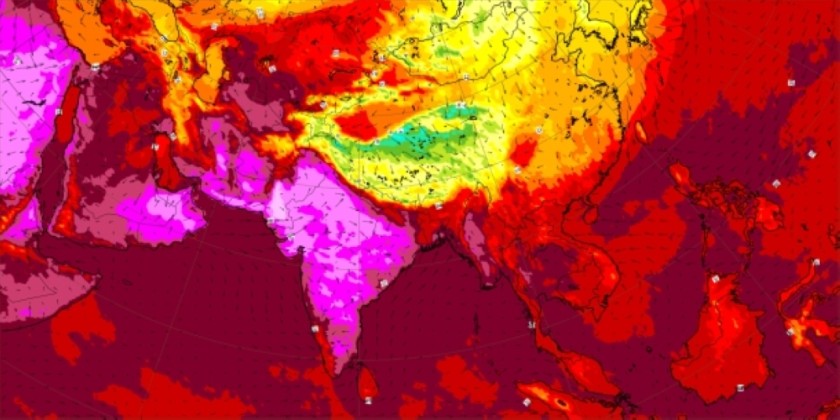

Muscat: Oman Meteorology said that there will be a noticeable rise in the apparent temperature (the actual feeling of temperature as a result of high humidity levels) today and tomorrow in the coastal areas of the Sea of Oman (governorates of North al Batinah, South al Batinah and Muscat), which leads to heat exhaustion and the possibility of heatstroke.
There is no respite from the summer heatwave in the Sultanate of Oman, even though August and September generally have moderate temperatures compared to the preceding months.
With more getting live air temperatures on their mobile phones or vehicle dashboards, Oman Met has clarified the scientific term 'feels-like' temperature.
The 'feels-like' temperature relies on environmental data including the air temperature, relative humidity, and wind speed to determine how weather conditions feel to bare skin Different combinations of temperature, humidity, and wind speed can increase the sensation of being hot or cold.
For example, a day that is very humid may feel hotter than it really is outside because your body sweat does not evaporate (and thereby cool the body) the way it is intended.
Oman Meteorology has said that there is a difference between a perceived (feels-like) temperature and actual recorded temperatures. For example, at the writing of this report, the actual Muscat temperature was around 40° but the feels-like temperature was a notch higher at 42°C and 43°C.
The recorded temperature is generally felt to be lower than the temperatures that a person feels.
Oman Met underlines the ability of the human body to adapt to the high air temperature through a self-cooling mechanism like sweat that evaporates and works to lower the body temperature, and the higher the relative humidity, the lower the rate of sweat evaporation, which keeps the body temperature high compared to the actual temperature recorded.
Some global meteorological facilities have established another approximate measurement index called the 'felt temperature' degree, a mathematical measure that combines the air temperature and the relative humidity to determine the approximate temperature that a person feels. An example is the temperature of 35° and relative humidity of 70, so the sensible heat is 51°Celsius.
Last week, Oman Meteorology warned that temperatures will be around the mid-forties and above in the following most parts of the country, except Salalah.
On Saturday, Barka, Al Amerat, and Al Rustaq all had temperatures above 46°C.
Subsequently, several meteorological stations in Oman, such as Bausher reported 45°C, Maqshan (Dhofar) 45°C, Suhar 44°C, Al Rustaq 44°C, Ibri 44°C, Samayil 44°C, Haima 43°C and Muscat International Airport 41°C on Friday.
The rising heat in the UAE crossed the scorching 50 degrees Celsius threshold on Saturday, marking this summer’s highest temperature. The mercury touched 50.8 degrees Celsius in Abu Dhabi’s Owtaid in Al Dhafra region at 2:45 p.m.

Speaking to the Observer, several citizens and residents said that they are used to seeing extremely high temperatures from May to July, but its extension to September (the back-to-school month) is perhaps for the first time in recent years.
According to the National Centre for Statistics and Information (NCSI), the average temperature in August 2022 was 32.3, around 32.1 in September, while in July it was 31.8, June 34.3, and 34.2 in May.
With government and private schools opening for the new academic year this week, parents are worried that they have no option but to send their children to schools despite high temperatures.
An Omani parent said, “Temperatures are likely to continue like this for some years unless serious actions are taken to contain global warming and climate change. I hope school authorities take appropriate measures to ensure children are not exposed to extreme heat.”
Some parents said that authorities should ensure that air-conditioning is properly working in school buses.
According to health experts, parents and teachers should ensure that students are hydrated adequately with limited exposure to sunlight.
Oman Observer is now on the WhatsApp channel. Click here



